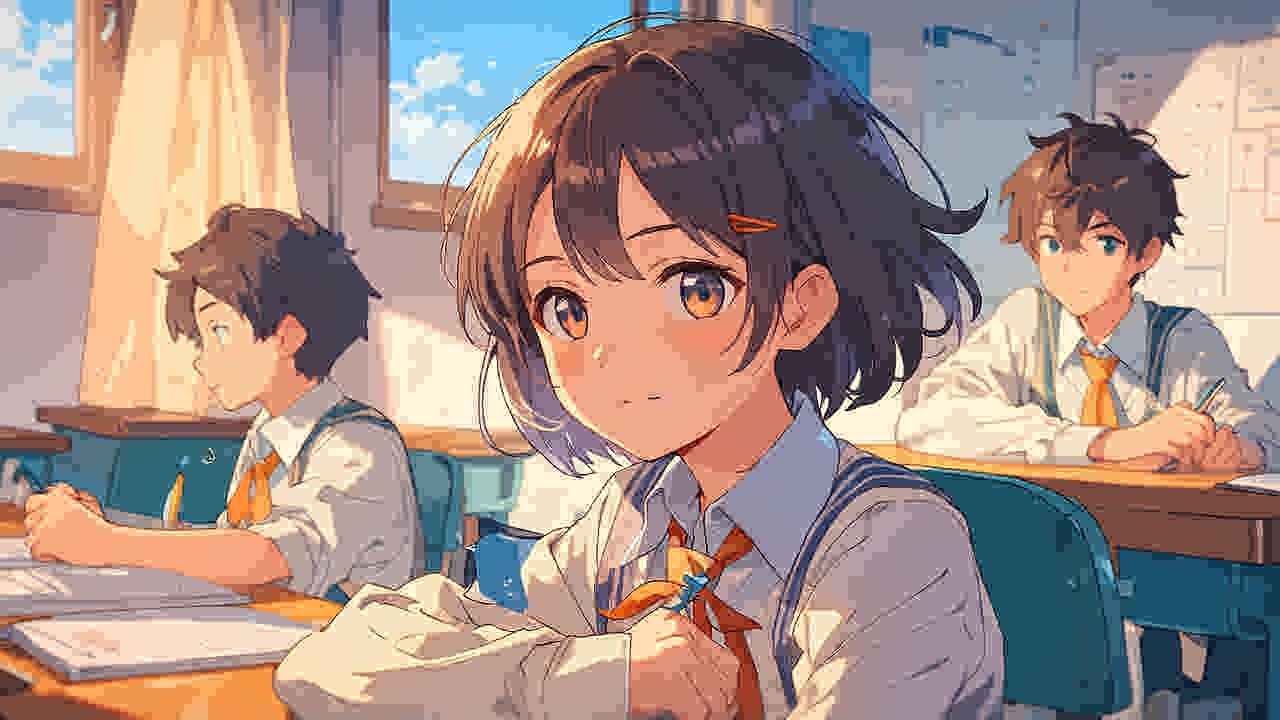When Pixar released Inside Out in 2015, it completely shifted how people looked at animated films. It wasn’t just another kids’ movie—it was an emotional masterpiece that appealed to audiences of all ages. By personifying emotions like Joy, Sadness, Anger, Fear, and Disgust, Pixar made the invisible visible. The film gave language to feelings many people struggle to express, and it created space for families to have honest conversations about mental health.
Fast forward to today, and the arrival of Inside Out 2: Glued to Phone couldn’t feel more timely. Why? Because we live in an age where phones aren’t just tools—they’re lifelines, distractions, stress triggers, and sometimes, emotional battlegrounds. For teenagers especially, phones shape friendships, self-esteem, identity, and even their sense of worth.
The Plot in a Nutshell
Recap of the Original Film
The first film introduced us to Riley, an 11-year-old navigating the challenges of moving to a new city. Inside her mind, her emotions worked at the “Headquarters” to guide her daily life. Joy tried to keep things positive, but when Sadness accidentally touched Riley’s core memories, chaos followed. By the end, the emotions realized something profound: sadness wasn’t a flaw but a necessary part of life.
This revelation—that all emotions have value—resonated across generations. Kids learned it was okay to feel sad or scared, while adults recognized their own emotional struggles reflected back at them.
The Sequel’s Digital Twist
In Inside Out 2: Glued to Phone, Riley is now a teenager. And with adolescence comes more complicated emotions—but this time, technology amplifies everything. Her phone is her constant companion, shaping how she connects with friends, manages stress, and seeks validation.
But inside Riley’s mind, things get crowded. The original five emotions aren’t enough to handle the complexity of her digital life. New emotions, born out of technology, step in—bringing both chaos and growth.
Themes of Technology and Growth
The central theme is balance: between online and offline, between constant connection and genuine presence, between seeking approval and nurturing self-worth. Technology isn’t framed as evil—it’s shown as powerful, both positively and negatively. Riley’s phone becomes a metaphor for the modern struggle of staying connected without losing yourself.
Meet the Familiar Faces
Even with new emotions arriving, the original five still carry weight. Each one adapts to the digital landscape in ways that feel strikingly relatable.
Joy’s Optimism Tested
Joy continues to lead Riley’s emotions, but she quickly learns that happiness in the digital age is complicated. Online likes, comments, and shares create bursts of joy—but they don’t last. Joy struggles with the difference between fleeting validation and deep fulfillment. Her arc raises the question: Are we truly happy, or just chasing digital dopamine hits?
Sadness as the Grounding Force
Sadness has grown more confident since the first film. She understands her value now. When Riley feels left out of a group chat or sees friends hanging out without her, Sadness steps in. Instead of pushing those feelings away, she helps Riley acknowledge and process them. Sadness represents emotional authenticity in a world where appearances often matter more than reality.
Anger in a Hyperconnected World
Anger has plenty to work with this time around. Wi-Fi crashes? Anger explodes. Online bullying? Anger roars. Unanswered texts? Anger boils. But beyond the comic relief, Anger represents something deeper: the frustration of being controlled by screens and the helplessness of wanting more control over life.
Disgust as the Social Media Critic
Disgust thrives in Riley’s digital life. She judges online trends, calls out cringe-worthy posts, and warns Riley about inauthenticity. In many ways, Disgust becomes Riley’s internal social critic, protecting her from blindly following the crowd.
Fear in the Age of Exposure
Fear has never been busier. He worries about embarrassing photos going viral, strangers online, or Riley saying the wrong thing in a public comment thread. Fear embodies the vulnerability of growing up in a world where one mistake can be broadcast forever.
Introducing the New Emotions
The arrival of new emotions is what makes this sequel stand out. They’re born from Riley’s growing complexity and her life online.
Anxiety
Anxiety is the most dominant new character. Constant notifications, endless what-ifs, and fear of missing out give Anxiety a permanent seat at the table. This emotion reflects the mental load of teenagers today, always worrying about how they’re perceived online.
Envy
Scrolling through perfect photos of peers, Envy constantly whispers, “Why not you?” This emotion thrives in the world of social comparison, feeding Riley’s insecurities and amplifying self-doubt.
Embarrassment
Shy and easily overwhelmed, Embarrassment enters whenever Riley posts something she regrets or becomes the subject of unwanted attention. Embarrassment highlights the vulnerability that comes with living publicly online.
Boredom
Ironically, despite endless scrolling, Riley often feels empty. Boredom captures that hollow feeling of consuming too much digital content without real satisfaction.
Curiosity
Curiosity is adventurous and restless, pushing Riley to explore new apps, communities, and conversations. While curiosity drives learning and growth, it also tempts Riley into losing hours in digital rabbit holes.
The Role of Technology in the Story
Phones aren’t portrayed as villains. Instead, they serve as mirrors of emotional complexity. Riley’s phone becomes a symbol: it connects her with others but also isolates her; it entertains her but also distracts her; it validates her but sometimes leaves her feeling empty.
This duality is what makes the movie so powerful. Just like in real life, the phone isn’t the problem—it’s how we use it.
Character Dynamics and Development
The interactions between emotions drive the humor, tension, and lessons of the film.
- Joy vs. Anxiety: Joy wants Riley to enjoy the moment, but Anxiety constantly pulls her back with fears. Their clashes represent the balance teens seek between freedom and caution.
- Sadness and Curiosity: These two form an unlikely bond. Curiosity pushes Riley into new experiences, while Sadness helps her process the inevitable disappointments.
- Fear and Embarrassment: Together, they embody the cringe-worthy, panic-inducing moments every teen fears. Their partnership is both funny and painfully relatable.
- Old vs. New Emotions: The tension between original and new emotions mirrors how new challenges disrupt old coping strategies in real life.
Messages and Lessons Behind the Film
Pixar is known for embedding deep lessons within their films, and Inside Out 2 is no different.
- Balance is Key – Technology isn’t the enemy, but overuse disrupts emotional well-being.
- Validation Isn’t Happiness – Likes and followers provide temporary joy but not lasting fulfillment.
- All Emotions Have Value – Even Anxiety, Envy, and Boredom have lessons to teach.
- Real Connections Matter – Genuine relationships outweigh digital validation.
- Parents and Kids Can Talk – The film creates a bridge for families to discuss emotional health in the digital age.
Audience Reactions and Cultural Impact
The release of Inside Out 2 created an immediate buzz. Parents praised it for sparking conversations with their teens about phone use. Teachers noted how students connected with the film’s portrayal of anxiety and comparison. Teens themselves felt validated, finally seeing their struggles portrayed on the big screen.
Culturally, the film has reignited discussions about mental health, digital well-being, and the importance of balancing technology with real life. Just like the original, it has moved beyond entertainment to become a touchstone for emotional education.
Conclusion
Inside Out 2 Glued to Phone isn’t just a sequel—it’s a reflection of our times. By introducing new emotions tied to technology while deepening the roles of old ones, Pixar has once again created a film that is entertaining, emotional, and profoundly relevant. The announcement of the sequel instantly sparked conversations across social media, parenting forums, and pop culture outlets. People wondered: How will Pixar handle the complexities of technology? What new emotions will appear? How will Riley, now older, navigate the pressures of growing up in a digital-first world?
It’s safe to say that Pixar has once again tapped into a subject that feels both universal and personal. The sequel doesn’t demonize phones but instead explores their emotional impact. It’s a story that makes us laugh, cry, and reflect, all while recognizing ourselves in Riley’s journey.
It reminds us that phones are tools, not masters, and that our emotions—old and new—exist to guide us, not control us. Riley’s journey is really our journey, and the film leaves us with a hopeful message: balance is possible, and our emotions are here to help us find it.



